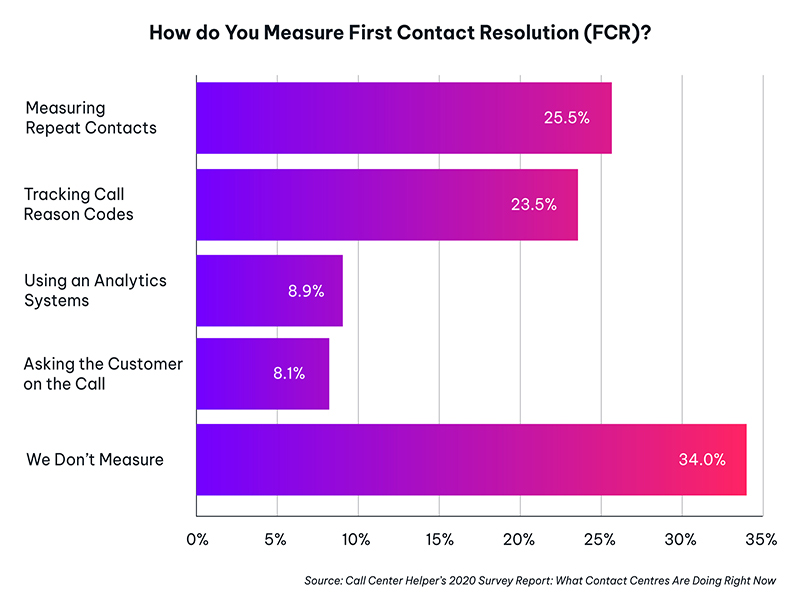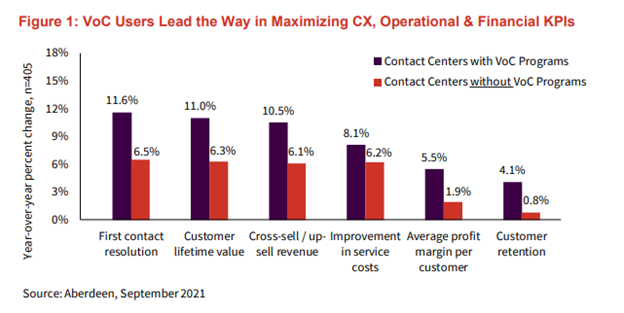As consumers, we expect First Contact Resolution (FCR) no matter how complex our issue may be, which channel we use, or which agent we speak with. What happens when that expectation is not met?
Research shows that unhappy consumers will share their negative experience with 9-15 people[i]. Here’s a negative experience that a friend recently shared with me, which highlights why FCR is so important.
Tired of poor mobile service when traveling, my friend decided that it was time for her family to switch mobile providers. She saw a great offer online: bring your own phone, port your number, and get a $100 Visa gift card for each line after 30 days of service. She went ahead and signed up both herself and her husband.
The new service has much better reception in rural areas, and she’s happy about that. However, after 60+ days, no gift cards had arrived, so she called the contact center to see what was going on.
The first agent she spoke with looked up her account, confirmed a call-back number in case they got disconnected, and asked to put her on hold while she looked into the gift card status—sure enough, the call instantly disconnected.
She waited 10 minutes for that call back, which never came. She said it was particularly frustrating, to the point of being comical, since after all, this is her mobile provider, so they know how to reach her!
She called back and repeated the process to let the agent access her account. The agent was then able to confirm that her gift card status was in process, but he couldn’t explain what that meant, nor provide a timeline for when the card might be sent.
He then noted that her husband’s gift card status was still pending validation, which meant that the account hadn’t yet been active for 30 days—even though he could see in the record that both accounts had been opened on the same day over two months ago.
My friend said that before this experience, she considered herself a fan of the brand and was a net promoter. But, after two contacts and no clear resolution, that is no longer the case and she’s considering switching providers again— and the company may never know why.
5 Ways Improving FCR Drives Other Key KPIs
FCR provides a balanced view of your contact center’s performance, from both a quality and cost perspective. Improving your FCR rate can help you improve many other contact center and business KPIs, such as:
- Loyalty
FCR is the biggest lever that service leaders can pull to improve loyalty, reduce churn, and add value to the organization. As the above story demonstrates, customers who don’t get their issues resolved at first contact are more likely to switch to competitors. Recent research finds that 50% will switch after one bad experience and it jumps to 80% after more than one.[ii]
"Recent research finds that 50% will switch after one bad experience and it jumps to 80% after more than one."
- Operating Costs
FCR improvements drive down your contact center’s operating costs and improve its efficiency. According to MetricNet research data published by ICMI, the average cost per contact in North America is $7.16[iii].
- Customer Satisfaction (CSAT)
FCR is strongly correlated with CSAT.[iv] If your customers had to contact you 3X to resolve an issue, their CSAT will likely be much lower than if they only had to contact you once.
- Sales Opportunities
FCR increases customers’ cross-sell or up-sell acceptance rate. In service interactions, agents must resolve issues before they earn the right to attempt any type of sales activity. Those who try to sell before issues are resolved are likely to irritate customers and undermine their brand preference.
- Employee Satisfaction (ESAT)
Contact centers with high FCR tend to have high ESAT, and vice versa. Agents that handle subsequent contacts from customers with unresolved issues tend to have high stress levels and low morale. Yes, high ESAT leads to better CSAT/FCR…but the door swings both ways.
How to Measure FCR
Most service leaders struggle to effectively measure FCR, and some don’t attempt to measure it at all. As noted in Call Center Helper’s 2020 Survey Report: What Contact Centres Are Doing Right Now:
“Despite 63.8% of our survey participants stating that they believe FCR is a ‘very important’ metric, more than one in every three contact centers (34.0%) don’t measure it.”
While the methods many contact centers use can be good sources of directional information, they’re not really the best for measuring FCR, as they tend to provide a skewed view.
Why Voice of the Customer (VOC) is Key to FCR
The best way to measure FCR is to let your customers determine whether their issue has been resolved—and how many contacts it took them to resolve it.
"Using direct customer feedback in the form of VOC surveys is arguably the most customer-centric method to measure FCR because it focuses on the customer’s perspective, not the organization’s."
Recent research from Aberdeen Strategy & Research[v] compared contact centers with VOC programs vs. contact centers without them and found that contact centers with VOC programs saw a 78.4% higher year-over-year improvement in their FCR rates (6.5% vs. 11.6%).
What to ask in a VOC survey to measure FCR
After a service interaction, contact centers can trigger a VOC survey via email, SMS, chat, or social messaging (depending on the interaction context) that includes two key questions:
- Issue Resolution: Was your issue resolved during your most recent interaction? (Yes, No, Not sure)
- Number of Contacts: Including your most recent interaction, how many contacts did it take to resolve your issue? (1, 2, 3 or more)
Customers must answer ‘Yes’ to the Issue Resolution question and ‘1’ to the Number of Contacts question for the contact to be categorized as “resolved at first contact”.
FCR is calculated as the number of “resolved at first contact” responses divided by the total number of responses. Ideally, this VOC-based FCR is supplemented with insights from a contact center’s QA reviews and repeat contact analysis to provide a more holistic view.
"Looking at service touchpoints through the eyes of your customers will show you deficiencies in your service processes – and the reasons why FCR was not achieved."
7 Steps to Improving FCR
To improve FCR, you need to baseline your current performance, identify root causes, develop smart goals, and put an action plan in place.
- Baseline your FCR: The first step is to know how well you’re doing now. A baseline FCR allows you to measure your performance through time against a consistent yardstick. Let your customers determine whether their issue was resolved, and how many contacts it took, by using a VOC-based FCR.
- Identify root causes: Knowing what’s preventing resolution at first contact is half the battle. Be careful not to solve for symptoms—get to the true root causes and identify the right actions to address them.
- Prioritize actions and define FCR goal: Your steering committee should prioritize actions based on their cost, complexity to implement, and impact. The committee should also help define and agree on an achievable and realistic FCR goal.
- Implement your action plan(s): Launch your plan and start measuring how it’s moving the needle.
- Maximize your impact: Encourage agents with incentives around FCR, and for those who consistently fall short, be prepared with performance management plans.
- Track your FCR performance: Let a VOC-based FCR measure be your one source of truth for tracking your performance. Supplement it with insights from your contact center’s QA reviews and repeat contact analysis to provide a holistic view of FCR.
- Omnichannel FCR measurement: A high FCR on phone calls, but a low FCR on chats, does not a good overall FCR make. Make sure you’re measuring across all contact channels: phone, chat, email, social media, brick & mortar, etc.
The Support You Need to Boost FCR
If you’re ready to start improving FCR. We’re here to help! CXone Feedback Management enables the continuous measurement and tracking of contact center KPIs like FCR with a voice of the customer approach. It incorporates robust surveying, reporting, and analytics across various KPIs, and provides service leaders access to real-world insights, reporting, automated action alerts, and suggested workflows.
[i] White House Office of Consumer Affairs, referenced in Customer Service Facts, CSM Magazine, April 25, 2015.
[ii] Zendesk’s Customer Experience Trends Report, 2020, referenced in What is customer experience? Strategy, importance & examples, March 8, 2022.
[iii] Best of ICMI In 2021 - #1: The Metric of Cost Per Contact, ICMI blog, December 29, 2021.
[iv] Metric of the Month: Key Relationships for Service Desk KPIs, Jeff Rumberg, HDI, August 15, 2017.
[v] The ROI of VOC: Create Happy Customers, Drive Efficiency & Improve Financial Results, Omer Minkara, VP & Principal Analyst, Aberdeen Strategy & Research, November 2021.






